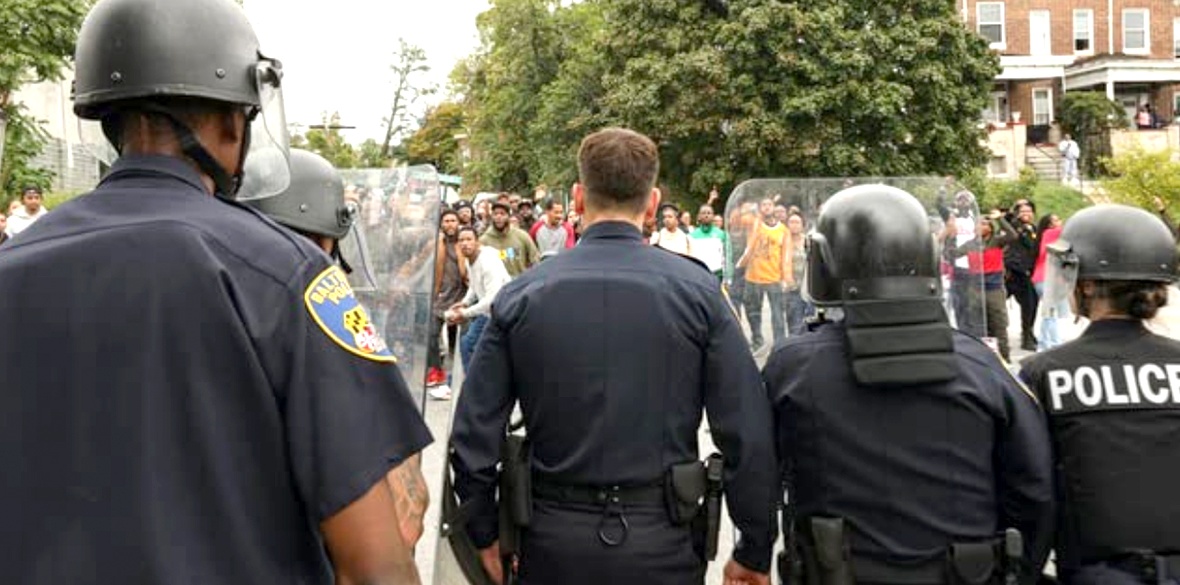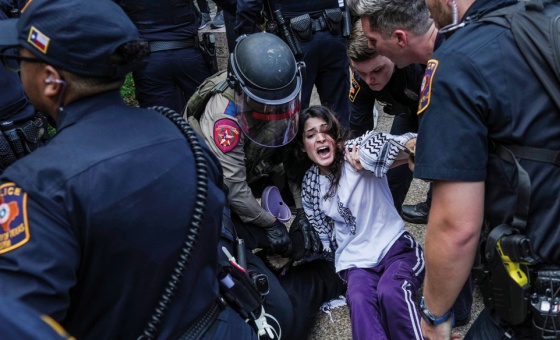This is the last article you can read this month
You can read more article this month
You can read more articles this month
Sorry your limit is up for this month
Reset on:
Please help support the Morning Star by subscribing here
POST-9/11, with the popularity of CSI, as George W Bush’s War on Terror overlapped with George Bush’s War on Drugs, the airwaves were filled with every conceivable kind of law enforcement team, unproblematic and uncorrupted, battling all kinds of crime.
These TV squads ranged from the Law and Order franchise which began over 20 years ago and has still not run its course to FBI profilers who anticipate future crimes (Criminal Minds) and cops who sort through the past to locate lawbreakers (Cold Case).
These series continue to be popular and to be the dominate image of the police in popular media.
However, in the wake of the Black Lives Matter protests, which though they took place in 2020 are just now starting to register on serial television, two shows have now appeared which offer a startlingly different view of the police and policing.
From Disney+ there is Oussekine, about the death of a young Algerian student in 1986 at the hands of the French police, and from HBO comes We Own This City, by the creators of The Wire about a division of the Baltimore police described as “1930s gangsters” who terrorised the black inhabitants of the city over the last decade.
Both are limited series of four and six episodes respectively and both are fictionalised representations of actual events.
Oussekine follows the Algerian family of that name as they attempt to find justice for their youngest son Malik, beaten to death by three cops in the midst of a student protest in the Latin Quarter that he was not part of.
The police deny any involvement in the killing with the French minister of the interior (Olivier Gourmet), staunchly moral in his quest for a cover-up, searching not for what happened to this budding student whose life is brutally snatched from him but rather looking instead for a way to shift guilt, finally alighting on the boy’s fragile condition as the excuse.
We watch the flowering of Malik’s sister Sarah (Mouna Soualem) as she indicts the police at the trial of two of the cops and we are treated to the spectacle of the French socialist(?) president Mitterand arriving at the family’s house for a photo opportunity, arranged by posting him next to the window with the best light while the family becomes props in the background.
Finally, we watch French justice, in one of the first ever cases with cops being held responsible for police violence, as the jury first convicts and then exonerates and whitewashes the guilty defendants.
More brutal because more systematic is David Simon and George Pelecanos’s We Own This City, based on the book by Baltimore Sun reporter Justin Fenton, part of a Pulitzer Prize winning team.
The series is solidly focused on the leader of Baltimore’s Gun Trace Task Force, Wayne Jenkins, charged not with confiscating individual guns but with finding the source of the weapons. Instead, Jenkins is shown using his squad to track down dealers in order to steal their money and confiscate their product to sell to his own fence who skims 15 per cent off the top and then resells the drugs back on the street.
Jenkins and his men break and enter cars and houses and then request search warrants. In one sequence they steal half of the $200,000 they find in a dealer’s safe and then for the body cameras they are required to wear, stage a phony reopening of the safe now shorn of half its contents with Jenkins directing “the film” before they shoot.
A frantic chase by Jenkins, with little or no evidence of drugs or guns, results in the death of an old man who the pursued victim crashes into. Jenkins steals from a dwarfish sex worker, boasting that he stole twice what she asked for and then eludes a 20-day suspension because of his activity in leading a confrontation with protesters against the death in custody of a young, well-liked Baltimorean, Freddie Gray.
The series does not extrapolate larger points beyond the police but as it unfolds there are larger points to be made. The first is along the lines of Michael Moore’s Bowling for Columbine which finds a link between US domestic violence and US weapons manufacturing and foreign wars.
Before entering the Baltimore police, Jenkins was a Marine who, as Fenton relates in his book, was described by his sergeant as exhibiting “the utmost flawless character that I’ve ever ran into over my 20 years of serving this great country.”
A country with a military budget — $782 billion in 2022 — greater than the total spent by next nine countries in the world, which claims it is constantly being threatened, and which, over the recent protests of both European (Italy’s Mario Monti) and developing world (Indonesia’s “Jocko” Jokowi) leaders preaches endless war in Ukraine, produces characters like Jenkins for its “war at home.”
That war, on the streets of the US, is waged mainly against its black and minority citizens. The devastation the squad wrecks is shown as entirely against the black population of Baltimore, viewed by Jenkins and his cohorts as not victims of impoverished neighbourhoods infected with guns and weapons, but always already as criminals.
There may be black and white behind the Blue Line but that line, as the series illustrates in almost every scene, is used to regulate and destroy all attempts at community which in its collectivity is perceived as threatening those who seem to look askance but ultimately look away, both in the US and in the world, from the state-sanctioned violence needed to maintain their status.











